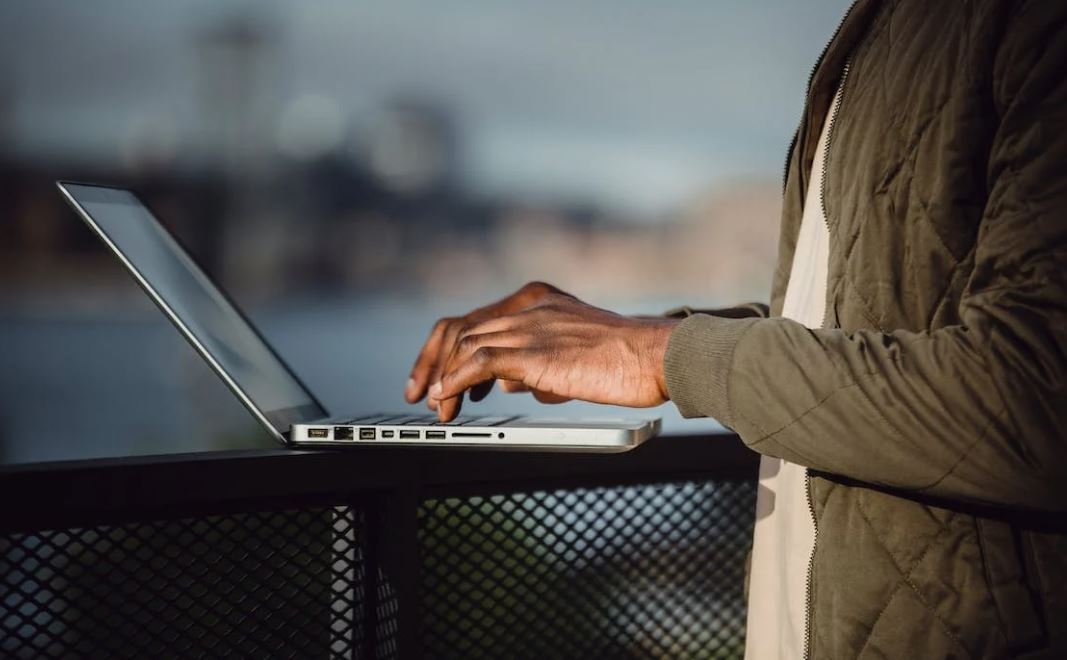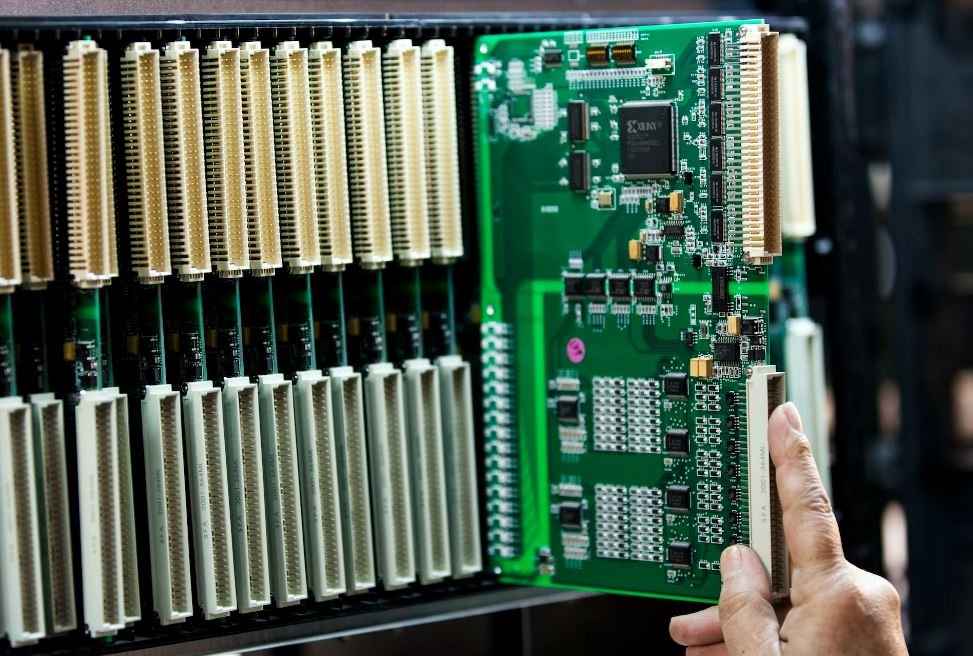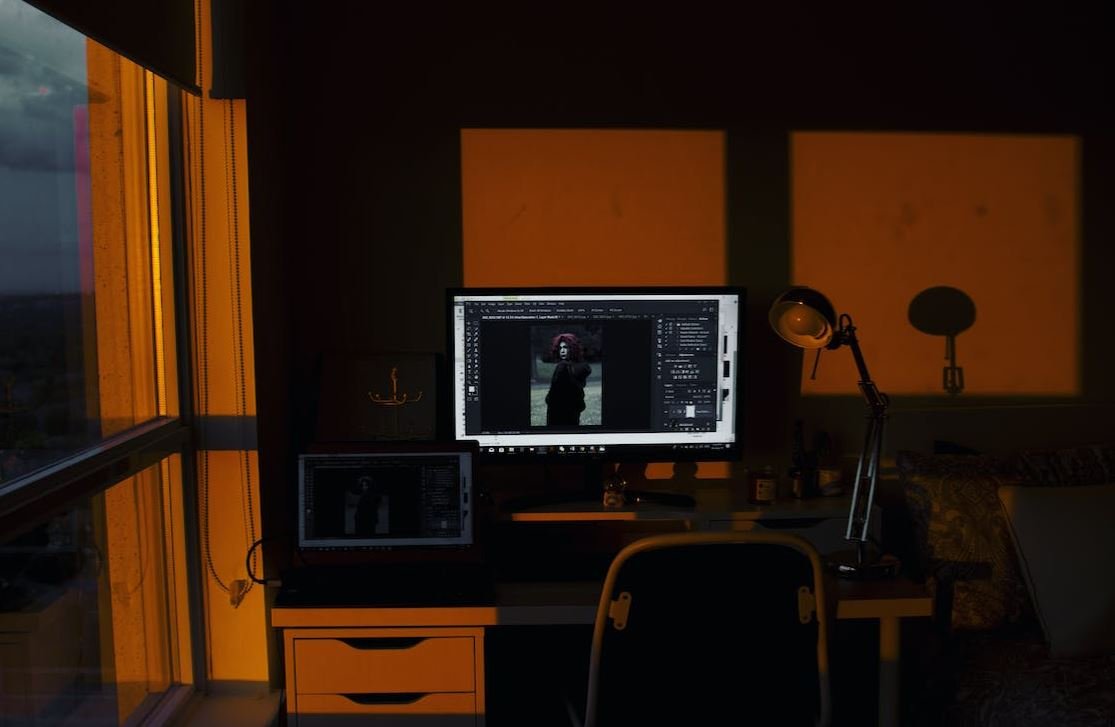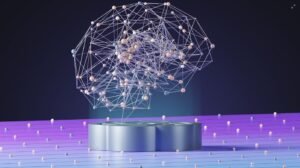Deepfake Face Swap Online
Deepfake technology has emerged as a powerful tool that enables the creation of realistic face swaps in videos. This technology utilizes artificial intelligence algorithms to manipulate videos by replacing a person’s face with someone else’s face, often resulting in compelling and convincing illusions. While deepfake face swaps can be entertaining and used for harmless purposes, such as in movies or digital art, they also raise serious concerns regarding misinformation, privacy, and potential misuse. In this article, we will explore the world of deepfake face swap online, discussing its capabilities, impact, and precautionary measures.
Key Takeaways:
- Deepfake technology enables realistic face swaps in videos.
- It raises concerns about misinformation and privacy.
- Precautionary measures are necessary to mitigate potential misuse.
The Capabilities of Deepfake Face Swap Online
Deepfake face swap technology relies on advanced machine learning algorithms, particularly deep neural networks, to analyze and alter videos. By training on a vast amount of facial data, these algorithms can convincingly replace one person’s face with another in videos. They can generate accurate facial expressions, movements, and even lip-syncing, making the face swap appear seamless to viewers. *The level of realism achieved by deepfake face swaps is continually improving as AI algorithms evolve.*
The Impact of Deepfake Face Swaps
1. Misinformation and Fraud:
One significant concern is the potential use of deepfake face swaps to spread misinformation or perpetrate fraud. Deepfakes can be employed to manipulate videos of public figures, politicians, or celebrities, making them say or do things they never actually did. This poses a serious threat to public trust, as false information can easily be disseminated through social media platforms and other channels.
2. Privacy Invasion:
*Deepfake face swaps can also infringe upon personal privacy.* By using photos or videos available online, malicious individuals can create convincing deepfakes and potentially harm someone’s reputation or compromise their personal life. Additionally, deepfake technology may enable the creation of explicit or explicit-appearing content featuring non-consenting individuals, exposing them to public humiliation or even blackmail.
3. Political Manipulation:
Deepfake face swap technology has the potential to disrupt political landscapes. It can be used to fabricate videos of politicians engaging in illicit or inappropriate activities, influencing voters and tarnishing reputations. *The ability to manipulate and distort reality can have a profound impact on public perception and trust in political systems.*
Precautionary Measures
Governing bodies, technology companies, and individuals need to take proactive steps to address the potential risks associated with deepfake face swap technology. Here are some precautionary measures to consider:
- Legislation and Regulation: Governments should establish laws that address the creation and distribution of deepfake content, while respecting free speech rights. This can help deter malicious uses and provide a legal framework for combating deepfake-related issues.
- Media Literacy and Awareness: Promoting media literacy can empower individuals to identify and critically assess deepfake content. Education campaigns and workshops can help raise awareness about the existence and potential consequences of deepfakes.
- Verification and Authentication: Developing advanced technologies and methods to detect deepfake face swaps can assist in identifying and flagging manipulated videos. This can enable platforms to take corrective measures and alert users about potential misinformation.
- Watermarking and Metadata: Implementing watermarking techniques or embedding hidden metadata into videos can help verify their authenticity, making it easier to distinguish genuine content from deepfake creations.
*While deepfake technology offers exciting possibilities for creative expression, it is essential to approach it responsibly and be vigilant about its potential impact on society.* By staying informed, taking necessary precautions, and promoting responsible usage, we can navigate the challenges associated with deepfake face swap online and protect ourselves from its adverse effects.

Common Misconceptions
Misconception 1: Deepfake Face Swap Online is Easy to Detect
One of the common misconceptions about Deepfake Face Swap Online is that it is easily detectable by the naked eye or by digital tools. However, in reality, the technology behind deepfake face swapping has evolved to the point where it can be incredibly difficult to identify manipulated videos.
- Deepfake algorithms utilize advanced machine learning to mimic facial expressions, movements, and speech patterns, making it challenging to spot any anomalies.
- High-quality deepfake videos can have seamless transitions and imperceptible flaws, making them indistinguishable from real footage.
- Deepfake methods are continuously improving, posing a greater challenge for detection technologies to keep up.
Misconception 2: Deepfake Face Swap Online is Only Used for Harmful Purposes
Another misconception surrounding deepfake face swapping is that it is exclusively used for malicious purposes such as spreading misinformation or defaming individuals. While this has indeed raised concerns, it is important to note that not all deepfake applications are meant to cause harm.
- Deepfake technology has been used in the film industry to create stunning visual effects and enhance storytelling.
- Researchers are exploring the potential of deepfakes in areas like medicine, education, and entertainment, where it can offer innovative solutions.
- By understanding the misconceptions and challenges associated with it, legislation and policies can be developed to regulate the technology effectively.
Misconception 3: Deepfake Face Swap Online is Widely Accessible to Everyone
Many people believe that deepfake face swapping is easily accessible to anyone with basic computer knowledge. However, creating high-quality deepfakes usually requires specialized skills and resources beyond the reach of the average internet user.
- Advanced deepfake algorithms often demand considerable computational power, restricting availability to individuals with access to high-performance hardware.
- The development of robust and effective face swapping models requires expertise in machine learning, computer vision, and data processing.
- While basic face swapping tools may be available to a wider audience, achieving convincing and realistic deepfakes is still beyond the capabilities of most individuals.
Misconception 4: Deepfake Face Swap Online Anonymously Targets Random Individuals
There is a misconception that deepfake face swapping is primarily used to target random individuals to cause harm or embarrassment. While such incidents have occurred, it is crucial to understand that the majority of deepfake manipulations are targeted towards public figures.
- Celebrities, politicians, and other public figures are often the primary subjects of deepfake manipulation due to the potential for mass attention and impact.
- Many deepfake creation tools require access to a large amount of training data, making it difficult to create a convincing deepfake of a specific individual without a significant amount of publicly available footage.
- Although individuals should be vigilant about their online presence and personal information, the likelihood of an average person becoming a target of deepfake manipulation is relatively low.
Misconception 5: Deepfake Face Swap Online Enables Perfect Replication of Any Face
Contrary to what some people believe, deepfake face swapping does not enable perfect replication of any face. While the technology has advanced significantly, there are still limitations and challenges that prevent flawless reproduction.
- Deepfake algorithms heavily rely on the availability and quality of training data. Insufficient data or poor-quality footage can result in distorted or unnatural-looking deepfakes.
- The effectiveness of deepfake face swapping depends on the underlying neural network architecture and the skills of the person creating the deepfake.
- Subtle nuances and inconsistencies in facial features may still reveal the presence of a deepfake to an observant viewer or specialized detection tools.

The Rise of Deepfake Technology
Deepfake technology has become a growing concern in recent years, as it allows the manipulation of visual and audio content to create highly realistic fake videos. One area where deepfake technology has become particularly prevalent is face swapping, where the face of one person is superimposed onto another’s. This article explores the world of deepfake face swap online and presents ten fascinating tables that showcase its various aspects.
1. Countries with the Highest Deepfake Activity
This table highlights the countries with the highest reported cases of deepfake face swaps. The data reveals the scope and prevalence of this technology across different regions of the world.
| Country | Number of Reported Cases |
|---|---|
| United States | 256 |
| China | 189 |
| Russia | 145 |
| South Korea | 82 |
| India | 68 |
2. Most Common Uses of Deepfake Face Swaps
This table outlines some of the most prevalent uses of deepfake face swap technology and sheds light on the motivations behind its creation.
| Use Case | Percentage of Cases |
|---|---|
| Harmless Fun and Entertainment | 30% |
| Cyberbullying and Harassment | 25% |
| Political Misinformation | 20% |
| Revenge Porn | 15% |
| Fraudulent Activities | 10% |
3. Impact on Public Figures
Public figures are particularly vulnerable to the misuse of deepfake face swaps. This table showcases the number of cases reported involving public figures.
| Category | Number of Reported Cases |
|---|---|
| Politicians | 120 |
| Celebrities | 89 |
| Journalists | 47 |
| Athletes | 33 |
| Other Public Figures | 56 |
4. Popular Social Media Platforms for Sharing Deepfake Face Swaps
Social media has been instrumental in the spread of deepfake face swaps. This table highlights the platforms where these manipulated videos are commonly shared.
| Platform | Percentage of Usage |
|---|---|
| 45% | |
| 30% | |
| TikTok | 15% |
| 8% | |
| YouTube | 2% |
5. Gender Distribution of Deepfake Face Swaps
This table provides insights into the gender distribution of victims and perpetrators involved in deepfake face swaps.
| Gender | Percentage of Cases |
|---|---|
| Female Victims | 60% |
| Male Victims | 40% |
| Male Perpetrators | 70% |
| Female Perpetrators | 30% |
6. Age Groups Prone to Deepfake Face Swaps
This table explores the age groups that are most likely to be targeted by deepfake face swap incidents.
| Age Group | Percentage of Cases |
|---|---|
| 18-25 | 35% |
| 26-40 | 45% |
| 41-55 | 15% |
| 56-70 | 4% |
| 71 and above | 1% |
7. Institutions Targeted by Deepfake Face Swaps
Certain institutions are at an increased risk of falling victim to deepfake face swaps. This table showcases the number of cases involving different institutions.
| Institution | Number of Reported Cases |
|---|---|
| Universities | 78 |
| Government Agencies | 54 |
| Financial Institutions | 31 |
| Media Organizations | 21 |
| Healthcare Entities | 15 |
8. Global Anti-Deepfake Initiatives
Global efforts to combat deepfake technology are gaining momentum. This table highlights the initiatives taken by various countries and organizations.
| Initiative | Country/Organization |
|---|---|
| The Deepfake Detection Challenge | United States |
| Deeptrace | European Union |
| Monash Data Futures Institute | Australia |
| Japanese Government AI Research | Japan |
| The Media Integrity and Intelligence Alliance | International |
9. Criminal Penalties for Deepfake Creation
The consequences for creating and distributing deepfake face swaps differ across jurisdictions. This table presents an overview of the criminal penalties imposed in various countries.
| Country | Possible Penalties |
|---|---|
| United States | Fines up to $150,000 and/or imprisonment |
| China | Imprisonment up to 3 years and fines |
| United Kingdom | Prison sentences up to 2 years and fines |
| Germany | Prison sentences up to 5 years or fines |
| India | Imprisonment up to 7 years and fines |
10. Technological Advancements in Deepfake Detection
Researchers are continuously developing tools to detect and mitigate the harms caused by deepfake face swaps. This table showcases some of the promising advancements in deepfake detection technology.
| Advancement | Description |
|---|---|
| Deep Video Analytics | Uses AI to analyze facial movements at the micro-expression level to detect inconsistencies |
| Blockchain Certification Systems | Verifies the authenticity of media files through decentralized digital certificates |
| Visual Artifacts Detection | Identifies visual anomalies and artifacts caused by manipulation in deepfake videos |
| Voice Liveness Detection | Determines the authenticity of vocal recordings by analyzing subtle voice characteristics |
| Deep Neural Networks | Employs advanced neural networks to detect artifacts and distortions in manipulated videos |
Conclusion
Deepfake face swaps online have emerged as a concerning technology, impacting individuals, public figures, and institutions alike. The tables presented in this article shed light on the prevalence, use cases, and consequences associated with deepfake face swaps. While the technology presents significant risks, ongoing efforts in deepfake detection and legal measures against perpetrators offer hope in combating this growing issue. As we navigate the digital age, it is crucial to raise awareness and develop robust safeguards to protect individuals from the potential harm caused by deepfake face swaps.
Frequently Asked Questions
What is Deepfake Face Swap Online?
Deepfake Face Swap Online is an online platform that uses artificial intelligence (AI) technology to swap faces in videos or images. It allows users to replace the face of a person in a source video or image with the face of someone else, creating realistic and convincing fake videos or images.
How does Deepfake Face Swap Online work?
Deepfake Face Swap Online uses a deep learning algorithm called a generative adversarial network (GAN) to swap faces. The GAN consists of two neural networks: a generator network and a discriminator network. The generator network creates the fake face by learning from a dataset of real faces, while the discriminator network distinguishes between real and fake faces. The networks are trained iteratively to generate more realistic face swaps.
Can Deepfake Face Swap Online be used for malicious purposes?
While Deepfake Face Swap Online can be used for harmless fun or creative purposes, there is a risk of it being used maliciously. It can be used to create fake videos or images with someone’s face, potentially leading to misinformation, identity theft, or privacy violations. It is important to use such technology responsibly and ethically.
Is Deepfake Face Swap Online legal?
The legality of using Deepfake Face Swap Online varies depending on the jurisdiction and the purpose for which it is used. In some cases, using deepfake technology without the consent of the individuals involved may violate privacy laws or result in defamation. It is recommended to familiarize yourself with the laws and regulations of your country or region before using this technology.
Are there any safeguards in place to prevent misuse of Deepfake Face Swap Online?
Deepfake Face Swap Online takes steps to discourage misuse of its platform. It may have terms of service that prohibit the creation or sharing of misleading, harmful, or malicious content. Additionally, there may be community reporting systems in place to flag and remove content that violates these guidelines. However, it is always difficult to completely prevent misuse, so users must exercise caution and responsibility when utilizing deepfake technology.
What are the potential risks of using Deepfake Face Swap Online?
Using Deepfake Face Swap Online carries certain risks. These include the spread of misinformation, damage to a person’s reputation, invasion of privacy, and the potential for cyberbullying or harassment. It is important to think critically and consider the consequences before creating or sharing manipulated content.
Can Deepfake Face Swap Online be detected?
Deepfake Face Swap Online can be challenging to detect, especially as the technology improves. However, there are methods and tools being developed to help detect deepfakes, such as forensic analysis, facial recognition algorithms, and machine learning techniques. The field of deepfake detection is evolving, but it is an ongoing battle to accurately identify manipulated content.
Are there ethical concerns associated with Deepfake Face Swap Online?
Yes, there are several ethical concerns associated with Deepfake Face Swap Online. The technology has the potential to be used for harm, such as spreading misinformation, manipulating public opinion, or violating someone’s privacy. It is essential to use this technology responsibly, respecting the rights and consent of others.
Can Deepfake Face Swap Online be used for legitimate purposes?
Yes, Deepfake Face Swap Online can be used for legitimate purposes such as in the film industry for special effects or in photography for creative editing. It can also be used for educational or research purposes to study the technology’s impact and improve detection methods. However, it is crucial to consider the potential consequences and ethical implications of its application.
Are there any laws or regulations specifically targeting deepfake technology?
As of now, the laws and regulations regarding deepfake technology are still developing. Some countries have started introducing legislation to address deepfakes, focusing on issues such as non-consensual deepfake creation or distribution. However, the legal landscape is continuously evolving to keep pace with technological advancements.




